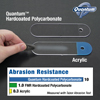This period saw unprecedented growth of new products, new designs, and even greater market leadership.
Starting off with gradient-tinted windshields (Airhawk, Agressor, Street Shield), National Cycle followed up with the enormously popular Flyscreen® and the Cruiseliner™ quick-release saddlebags. Accessories designed for Honda cruisers became the Paladin® line, and in 2001, National Cycle launched ZTechnik® with a wide range of accessories designed exclusively for BMW® motorcycles.
The real frosting on this decade's cake was the 2003 introduction of their quick-release SwitchBlade® Windshields and Mount Kits that let riders remove or install their windshield in less than 5 seconds, without tools. These super-tough, premium quality polycarbonate windshields also introduced another first: Quantum® hardcoating. Developed by National Cycle, Quantum is the toughest and most scratch resistant, state-of-the-art hardcoating in the world. There is simply nothing better.
The company could not rest on its laurels, however, because the cream of the crop was just getting ready to be poured.
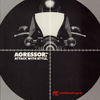
The new Agressor™ featured, like the Plexifairing3™, a QuickSet™ Mount with RakeAdjust™ and NoHole Ballsocket™ – high end features in a small package.
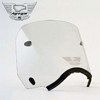
This gradient-tinted Agressor GT™ is on a Honda CB1100.
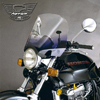
The Agressor GT™ on a Yamaha V-Max.
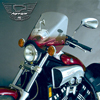
The Agressor GT™ on a Kawasaki VN750 Vulcan.
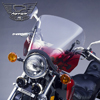
Along with the Agressor GT™, National Cycle also offered the AirHawk GT™, a smaller, sportier version of the Plexistar2.
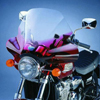
In 1997, National Cycle introduced their new Cruiseliner™ Saddlebags. Model-specific mount kits were designed for each bike for a perfect fit. They were watertight, lockable, available in pocketback (shown) and smoothback styles, and – best of all – could go on or off the bike in just a few seconds.
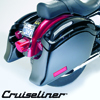
Smoothback-style Cruiseliner™ saddlebags are shown here on a Suzuki Marauder.
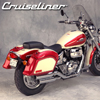
Smoothback-style Cruiseliner™ saddlebags are shown here on a Kawasaki Vulcan.
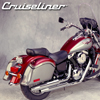
One of National Cycle’s biggest success stories was the little Flyscreen® windshield, which emulated the racing screens on 1950s British racing bikes.
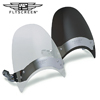
A fork-mounted Flyscreen® in dark tint on an FXDWG Wide Glide.
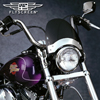
A headlight-mounted Flyscreen® on a Suzuki SV1000.
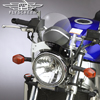
National Cycle contributed to the design and function of the K1100RT electric transport windshield.
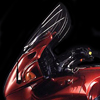
In 2000, National Cycle launched their ZTechnik® brand for a line of accessories designed exclusively for BMW® motorcycles. ZTechnik is now a well-known brand in the BMW community.
This is the ZTechnik® Dolphine™ on a BMW R1150RS.
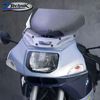
A ZTechnik® polycarbonate replacement screen for the K1200RS.
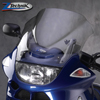
ZTechnik® also offered replacement screens for the BMW R1200CL touring cruiser.
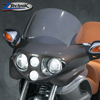
A ZTechnik® specialty was developing effective windscreens for bikes that came without them.
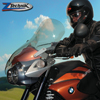
At the 2001 Sturgis Rally, National Cycle introduced a quick-release windshield that was, for the very first time, height adjustable and key-lockable. This was a precursor of things to come.
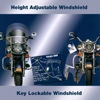
The cover of National Cycle’s 2001 Catalog.
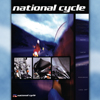
In 2001, National Cycle’s president Barry Willey, along with Bill Crawford, completed their “Neutron Star”, a Yamaha Royal Star cruiser chassis with a Yamaha V-Max motor – the first power cruiser.
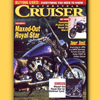
Barry Willey does a burnout with the Neutron Star in the company parking lot.
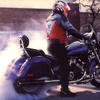
In 2002, National Cycle introduced Paladin®, a line of Highway Bars and quick-release Backrests/Luggage Racks designed exclusively for all late-model Honda cruisers. Each accessory was custom designed and engineered for each specific model.
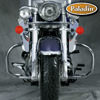
The Paladin® QuickSet Backrest/Luggage Rack was compatible with Cruiseliner™ mount kits. It offered quick-release convenience with key-lockable security.
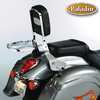
Unlock it, push the release levers, and it’s off… in seconds.
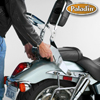
The cover of National Cycle’s 2003 Catalog.
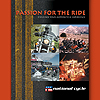
2003 saw the release of National Cycle’s widely acclaimed SwitchBlade® Windshields for metric cruisers and Harley-Davidson motorcycles.
Each bike had a mount kit designed just for it, which mounted any of four sizes of SwitchBlade Windshield – which came on and off in less than 5 seconds. Best of all, they were Quantum® hardcoated Lexan® polycarbonate.
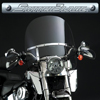
SwitchBlade® Mount Kits were available for plain forks, tapered fork covers, and nacelle fork covers. Chromed steel and stainless steel made them indestructible.
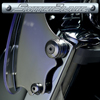
To remove a SwitchBlade® Windshield, just give it a quick tug. To reinstall it, place it on the lower spools and give it a quick push. It’s that easy.

Exclusively for SwitchBlade® for Harley models was a security lock, so riders could have a quick release windshield without it being quickly stolen.
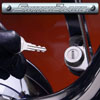
A SwitchBlade® Chopped™, the most popular size, on a Honda VT1300CR Stateline. Also shown are Chrome Lower Deflectors, a Spotlight Bar, and Hand Deflector – all designed to fit and work together.
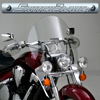
National Cycle’s exclusive Quantum® hardcoating was tested on a Benelli Adiva scooter, which had a full canopy and windshield wipers. One million wipe cycles later, the windshield was still scratch-free.
Quantum was so clearly superior to everything else that the company used it also for their Heavy Duty™ windshields, replacing the older FMR hardcoating.
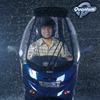
In 2004, Honda gave National Cycle an Innovation Award for their groundbreaking Quantum® hardcoating.
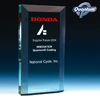
This chart shows the scratch resistance superiority of Quantum® hardcoating over the industry-standard FMR hardcoating.
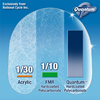
Scratch resistance of these materials is based on the Tabor Abrasion Test, but for years the company had easily demonstrated the results with plastic samples and a simple piece of steel wool.
